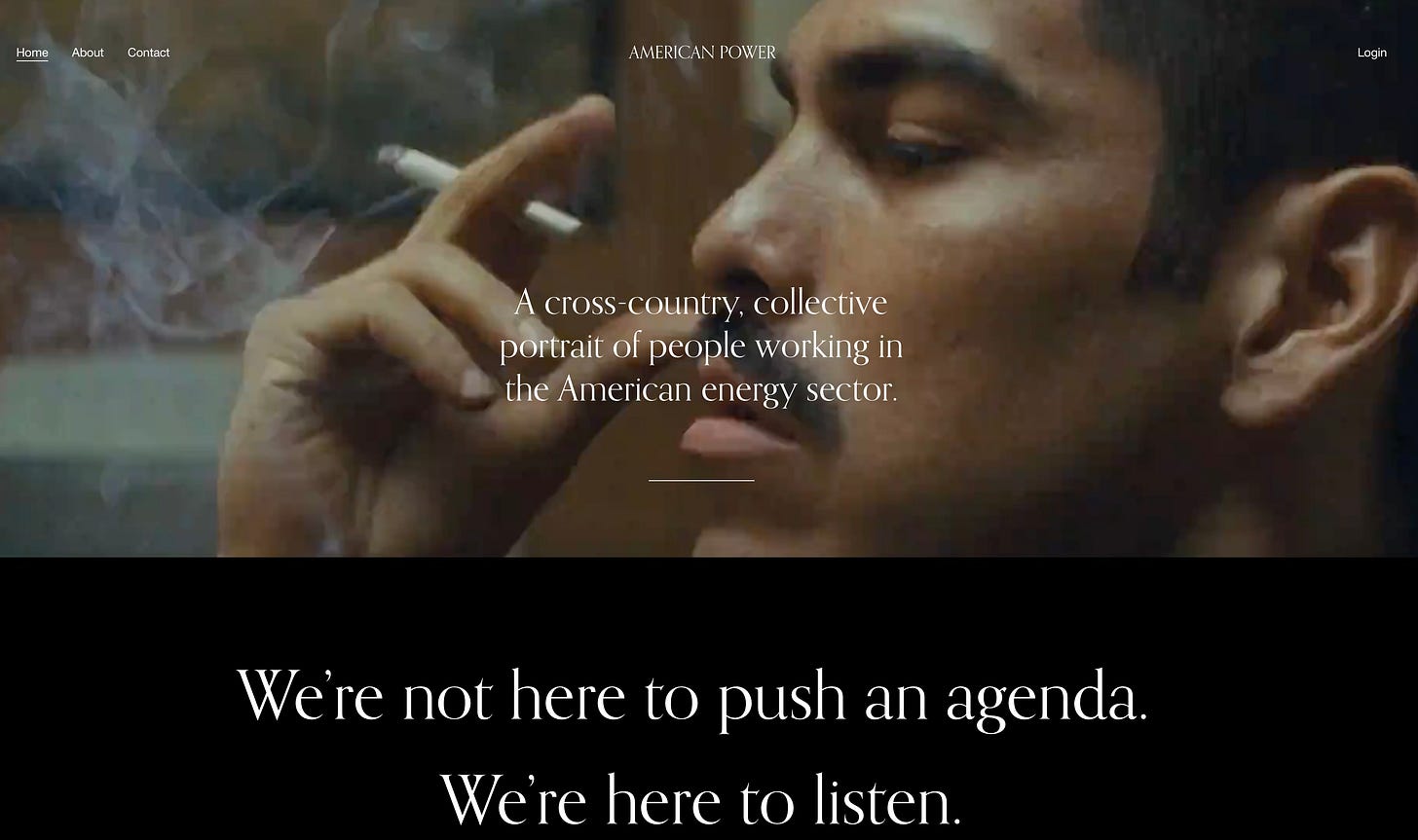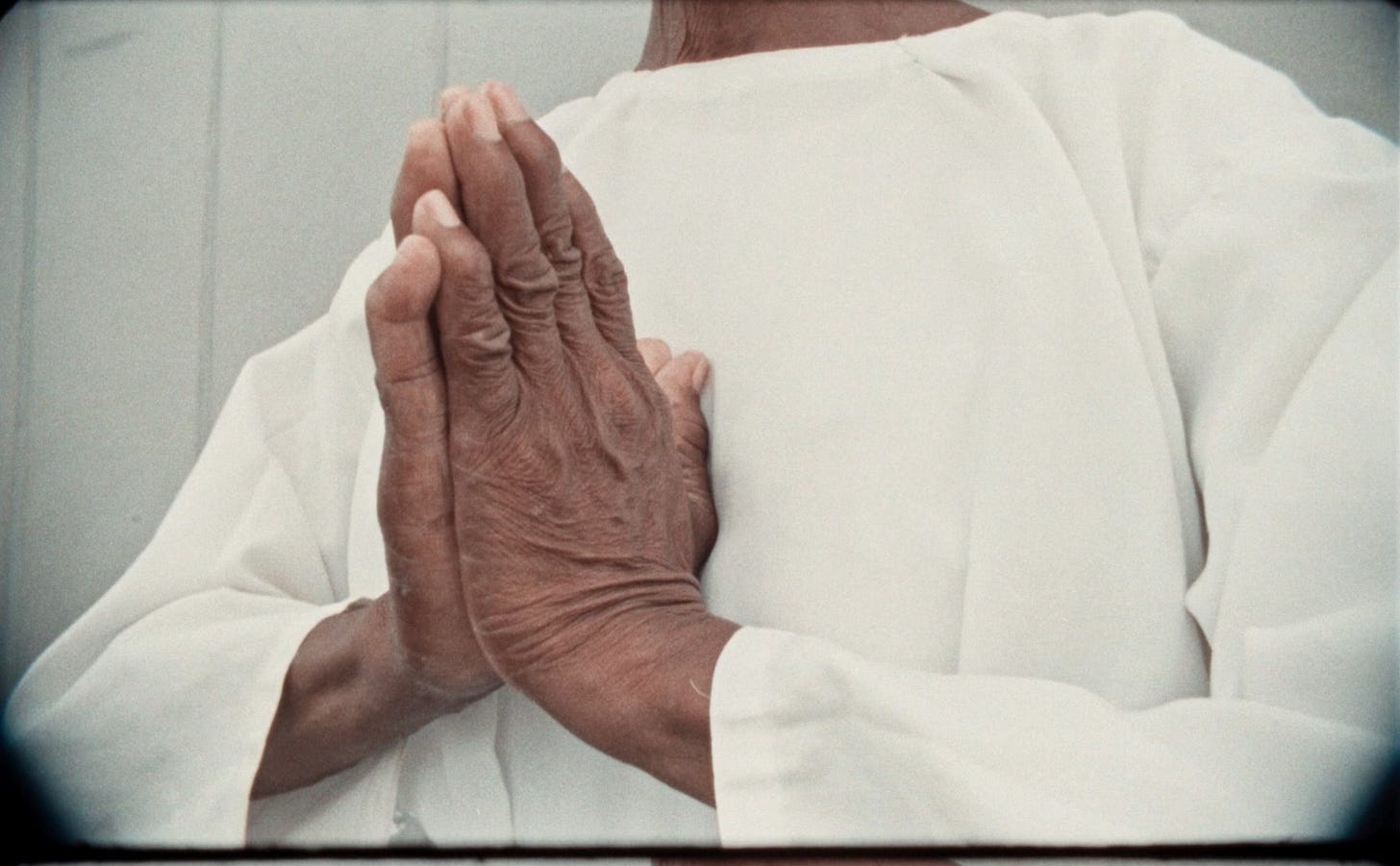In Conversation with Tomas Leach — Part I
On websites, collaboration, and trust
This is the first part of an ongoing conversation with the talented filmmaker Tomas Leach. In this conversation, we discuss the website I made for recruiting participants for my film and ways he has brought participant collaboration into his process.
Tomas and I first connected through Substack.
Both of us are filmmakers who also are looking for ways to put language to our messy process. We share a desire to talk about nonfiction filmmaking in a way that feels curious, and not overly certain.
Talking with Tomas is fun and grounding for me. He’s a great listener who has the ability to reflects things back with care. We may continue these exchanges—or simply keep encouraging each other to share more in-progress thinking.
You can read the second half over on Tomas’ Little Scraps of Filmmaking.
Tomas Leach: Why don't I ask you about your website?
Elaine Sheldon: Sure, we could! I knew the audience for this website. I should preface by saying the point of that website wasn’t necessarily to explain the film I want to make. It was more about dispelling assumptions about what the film is or isn’t. I'm working in a space - energy - that's highly politically charged, and when people hear “documentary”—regardless of what side of the energy debate they’re on—they assume one thing or another.
So I thought, how do I make this website not just a film website, but a call to tell stories that sit outside the current binary of “good” and “bad” energy? That’s the point of the site. I don’t know how illuminating it is as a traditional film website—it’s more of a calling card for the people I’m trying to recruit to go on this journey with me.
Tomas: I've never done that. It's really a casting call. When did you decide that you needed something like that to reach people?
Elaine: I don’t think I would’ve even thought about it, but my friend Penny Lane made a website for a film she’s working on about Flaco—the owl who escaped from the Central Park Zoo in 2023 and survived for nearly a year in Manhattan. She’s been crowdsourcing images and stories people captured of him while he was flying free. I thought, the intention of my project is to gather countrywide stories from every region. I'm going to need help—it’s a recruitment and casting tool. That’s why we created the survey where people can tell us about themselves.
The reason the images (on the homepage) move quickly, by the way, is that same intention: I don’t want this film to be perceived as any one thing. If you think this film is about people in rural places, I’ll show you someone in a city. If you think it’s about old people, I’ll show you a kid jumping into a lake.
Elaine: I’m trying to confuse expectations because I want the film to be surprising. Those images are from other films. The site is almost like a campaign saying: we’re not here to push an agenda—we’re here to listen. I also made sure to name every type of energy across the site so that people can see themselves reflected. That felt really important. This is about trust. It’s saying: we’re not going to be irresponsible with you or your story, no matter where you fall on the spectrum of this conversation.
Tomas: Is it only speaking to people who might be in it, or has it crossed over and been any use for anything else?
Elaine: It’s really only speaking directly to potential participants. “Do you work on a wind turbine? Do you have a story? We want to hear from you.” It’s aimed at the worker, their family, their employer, the startup founder—whoever has a story to share.
Tomas: Because the imagery is pretty sophisticated. There's Rust and Bone in there, or No Country for Old Men. It's very beautiful, widescreen. It's not only saying you can trust us—it’s saying, this is the lush film it's going to be.
Elaine: Yeah. I like to make beautiful things. I appreciate beautiful things. And I think this story is gritty, individual, collective, and layered. Those image references also give me scene ideas. If we shoot 20 different people having dinner, with the same overhead composition—how can we cut between those? There's a shot from The Nutty Professor in there where people are reaching in to eat. Once I get someone on the phone after they’ve seen the site, I start giving them tangible examples of what I want to film. One of those is a family dinner. And how it’s shot is something I start communicating in those second and third calls.
This is very different from my previous films. In the past, I followed four men over 18 months, and what happened is what happened. But with this film, we’re making something together. It requires more participation from the person being filmed.
So I’ll ask: what do you do that falls in this category? Because we’re also filming a version of this in California, and I want the pieces to stitch together into a unified story of the country. We (myself and my DP Curren Sheldon) have to be intentional about the frames. They inspire ideas—like using power lines or other visuals to link people’s stories, so it feels like one interconnected universe. I want this to feel like a massive, overwhelming thing we’re all contributing to: energy production and consumption.
Tomas: I think that's why I was interested in the website is because it not only is a call for people to come and tell their stories, but it informs in the language and in the visual language. It's communicating the way you're going to be telling the stories. That collaborative way of making something. I think that's where I saw the commonality and where I saw similarities in the way I'm making my film. I'm talking to the people in it about what I'm after and what it might be and how we might create that together. So there's less of that just turning up and filming. It's more, could we go and do this together? And I'm relying on them to reveal what that might be with some creative thought themselves.And I think that the images on your site start planting the seed for anyone who might respond because they're thinking about it in a visual language that is precise in terms of tonality.
Elaine: This is the first time I’ve come to people for a feature film and said, “Let’s create this together.” Part of it was my anxiety around how the industry still tends to operate. Even when done ethically, there's often this dynamic of coming in with an idea, filming, and then leaving. I’ve had this sneaking suspicion that if it continues that way...continue reading the conversation on Little Scraps of Filmmaking - also consider subscribing while you’re there!






